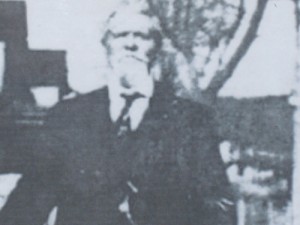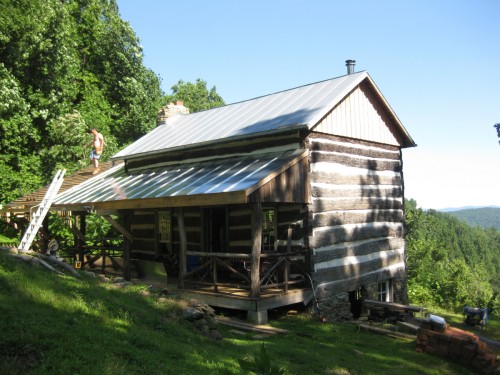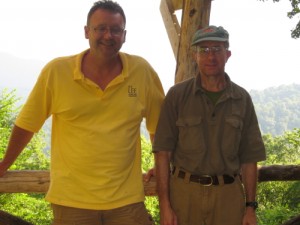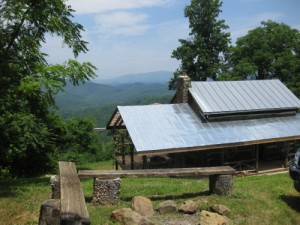Archive for June, 2009
The 2003 movie Cold Mountain is being brought vividly to life in the form of a cabin restoration project in the beautiful Blue Ridge Mountains of Virginia.
Once on the brink of decay, this three-story cabin is undergoing a magical rebirth through the skill and volunteer labor of a handful of members of the Potomac Appalachian Trail Club, known nationally as PATC.
Samuel Eaton, who built the cabin in 1850, may well have lived the real life of the movie’s W.P. Inman—a southern soldier from North Carolina who simply walked away from the army after experiencing the horrors of war. The mists of time, however, give us no hint as to where Eaton served or what battles he may have fought in. Nonetheless, it’s almost certain he returned to his mountain home when the war ended.
The cabin is located on the evening side of the Blue Ridge Mountains, six miles southeast of the town of Elkton. In the mid-1800s, the people who lived in this area were true mountaineers. One can easily imagine the arduous hand labor required to fell and hand carve the eighteen inch chestnut beams used in the construction of the home. In the early part of the twentieth century, the giant chestnut tree was destroyed by blight. Over three billion trees were lost to the Asian bark fungus and helped accelerate the decline of the mountain culture. To look at the hand cut logs used in the cabin’s construction is to gaze back into a period rich in American history.
Keith Argow, a professional forester, gifted the two hundred acre property and cabin to PATC. The cabin is named in his honor.
Jeff Testerman, a project superintendent with a major commercial construction firm in Charlottesville, is the moving force behind the cabin’s restoration. Jeff’s love of history and the mountains drew him to commit to the lengthy and difficult volunteer project. Frank Francisco, a retired engineer, ably assists Jeff. Both men have labored for over four years to bring an invaluable piece of history back to life. It is anticipated the restoration will take another year before completion.
Each month, approximately ten volunteers travel to the property for a weekend of work and camaraderie. With meticulous attention to construction details dating from the 1800s, the dwelling is being brought back to its original condition. Enhancements, such as a side porch with breathtaking views of the Shenandoah Valley, add an updated dimension while rewarding visitors with an impressive scene of a bygone era.
I am fortunate to be one of the volunteers that assist with this project on occasion. While I only participate two to three times a year, usually as cook and wine steward from Hagarty Cellars, the reward for being even a small part of this adventure is gratifying. Moreover, each weekend trip includes a full dinner party on Saturday evening replete with home cooked food and libations, including a nice assortment of wines and beer. Recreating history is thirsty work.
 Upon its completion, Argow cabin will be placed into PATC’s rental chain of thirty-three cabins located in the mountains of Virginia and Maryland. The cabins are available for rent by club members and the general public. If you are intrigued by the thought of reliving the life of a 1800s Virginia mountaineer for just a few days, consider a stay at this rustic historic home sometime after June 2010.
Upon its completion, Argow cabin will be placed into PATC’s rental chain of thirty-three cabins located in the mountains of Virginia and Maryland. The cabins are available for rent by club members and the general public. If you are intrigued by the thought of reliving the life of a 1800s Virginia mountaineer for just a few days, consider a stay at this rustic historic home sometime after June 2010.
2007 Petit Verdot
Price: $25
Chris Pearmund—one of the hardest working guys in Virginia wine—has found the time to create a solid rendition of what could be Virginia’s next big red wine grape. Petit Verdot is a classic blending grape, but here is an example of a 100% varietal requiring no other reds to enhance its flavor. This robust wine has layers of blackberry, black cherry and spice on the palate. There’s nothing petite about this Petit. Stocks of this reserve wine are limited so head over to the eponymous Pearmund Cellars to score a few bottles. And don’t forget the baby back ribs on your return home.
Pearmund Cellars is surrounded by its beautiful vineyards and is located at 6190 Georgetown Road, Broad Run, VA 20137. The winery is opened seven days a week, 10am to 6 pm.
(540) 347-3475
 When we pull the cork on a favorite bottle of wine, the last thought likely to cross our mind is, “So, how is this stuff made”?
When we pull the cork on a favorite bottle of wine, the last thought likely to cross our mind is, “So, how is this stuff made”?
But, it’s a great question. It’s a bit surprising we don’t focus more often on how a winemaker does what he does. Most likely, we are simply eager to smell and taste our freshly released libation, rather than spend time cogitating on its production. This is good. There is too much going on in our lives today to get sidetracked on why wine is wine.
Nonetheless, on occasion, it’s useful to gain a better understanding of the why and how of something. It can enrich our enjoyment of the thing in question and deepen our understanding of how it came to be.
In the case of wine, this is the occasion.
Throughout the world, the fall season is harvest time for wine grapes. In Virginia, white grapes are brought into the winery in September and the reds in October. This period is known as the “crush”-from the traditional act of crushing the fruit prior to fermentation. These two months, in which vivid golds, yellows and reds are splashed across the landscape, is the end of a year’s worth of meticulous vineyard work.
Wine grapes are harvested during the early morning hours, whenever possible, to keep the fruit cool and retain full flavor. Vineyard workers quickly, but gently, cut each cluster by hand and drop it in into plastic containers called “lugs.” When filled, the thirty-five pound yellow boxes dot the vineyard waiting to be placed on a tractor bed and taken to the winery. In the case of white grapes, the fruit is destemmed and crushed by machine, and the slurry poured into large presses. Over the course of two to three hours, the juice is gently pressed from the grapes and then pumped into stainless steel tanks or oak barrels. The dried raisin-like remains are discarded, or better yet, taken to compost piles to be used as vineyard fertilizer the following year.
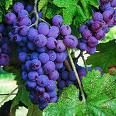 About a month later, the red grapes are gathered in. Here the difference between making white and red wine is most evident. The reds are destemmed and then gently crushed, just as the whites. But, as opposed to pressing the white grapes and tossing the skins and pulp away, red wine is produced by fermenting the entire mixture of juice, skins and pulp together. This slurry, called “must,” is how red wine achieves its color and tannic backbone, key elements enabling it to age longer than a white.
About a month later, the red grapes are gathered in. Here the difference between making white and red wine is most evident. The reds are destemmed and then gently crushed, just as the whites. But, as opposed to pressing the white grapes and tossing the skins and pulp away, red wine is produced by fermenting the entire mixture of juice, skins and pulp together. This slurry, called “must,” is how red wine achieves its color and tannic backbone, key elements enabling it to age longer than a white.
In a completely natural environment, grape juice will begin fermentation on its own. However, intermingled with the beneficial natural yeasts that cling to the waxy substance on the grapes, there often lurks nasty yeasts that will take the wine to places we don’t won’t it to go; unless of course, you have a preference for wine that smells like a barnyard, or worse. To prevent this possible contamination, most wine today is made using commercial wine yeasts. These are natural yeast that are isolated and cloned for winery use worldwide. These catalysts are created to emphasize an array of aromatic and flavor profiles and quickly and safely turn the precious juice into clean, flavorful wine.
 Another important distinction between white and red fermentations is temperature. White wine is fermented between fifty-five to sixty-five degrees to help retain aroma and flavor, while red wine is powered to dryness at up to ninety degrees to extract as much color and tannin as possible. The whites can take four weeks to ferment while the reds often become wine in less than a week.
Another important distinction between white and red fermentations is temperature. White wine is fermented between fifty-five to sixty-five degrees to help retain aroma and flavor, while red wine is powered to dryness at up to ninety degrees to extract as much color and tannin as possible. The whites can take four weeks to ferment while the reds often become wine in less than a week.
Once the juice has been safely transformed into wine, the aging process begins. The wine contains large amounts of dead yeast cells and other debris. These materials begin to slowly precipitate out of the wine through the force of gravity. Periodically each tank or barrel of wine will be “racked,” a process of pumping the wine off the settled debris, or “lees.”
Slowly, over a period of months, the wine begins to clarify. Eventually, white wine is “fined.” This process involves adding an agent to the wine, such as a high quality powdered clay, that acts like Velcro, pulling the final particles out of suspension and leaving a clear wine. Today, many winemakers do not fine their reds but simply let time clarify them since the aging process for the reds is much longer than for whites.
Throughout the aging process, pH, acidity, residual sugar and other vital markers are regularly monitored and adjusted as needed. One additive that causes concern among some wine drinkers is the use of sulfur dioxide as a disinfectant. Sulfur has been used for hundreds of years to protect wine from microbial infections. If it was not widely employed, most wine could not survive for more than a year or so. If you are concerned about the use of sulfur dioxide in wine, consider that a package of dried fruit contains up to twenty times the amount of sulfur than a bottle of wine. It is also found in a variety of other foods, such as fruit juices, lunchmeats, jams and baking supplies. Thank heaven for sulfur.
The distinction between whites and reds continues when it comes to the bottling. Unlike red wine that benefits from extended aging for up to twenty-four months, the whites are normally bottled young. The converted juice of white grapes hanging in the vineyard in August might well be resting on a wine shop shelf the following May. Young, fresh and exuberant, that’s how we like our whites.
As the wines mature, another critical process comes into play-blending bench trials. This is a procedure the winemaker may employ to produce the best wine. While some wines are not blended-more often whites-many of today’s reds and some whites are a blend of two or more wines. Blending can increase the wine’s complexity, flavor, mouthfeel and depth. Much effort goes into evaluating which blends take a wine to a higher level of enjoyment. The culmination of the bench trials reinforces the truism that the whole is greater than sum of its individual parts.
Finally, the day arrives when all the effort to create a gold medal winner must go into the bottle. In Virginia, many wineries employ a contracted mobile bottling line, built into an eighteen-wheeler rig, to perform the actual bottling. While it is the completion of the winemaker’s art, most find it the least enjoyable part of the process. The equipment is complicated and susceptible to mechanical failure. Combined with the physical demands of lugging hoses, forklifting cases of bottles and stacking the finished wine in tight warehouse quarters, the entire winery staff is most happy when they see the bottling rig hit second gear and leave the property.
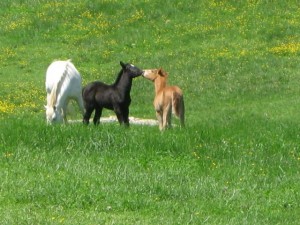 Most wineries in our state offer tours along with their tastings. If you have not availed yourself of this educational experience, you are missing an opportunity to bring the art of winemaking alive. To stroll around a wine cellar and have your guide explain the intriguing process of making wine is to better understand the dedication involved in taking the grape from the vine to the wine.
Most wineries in our state offer tours along with their tastings. If you have not availed yourself of this educational experience, you are missing an opportunity to bring the art of winemaking alive. To stroll around a wine cellar and have your guide explain the intriguing process of making wine is to better understand the dedication involved in taking the grape from the vine to the wine.
Published on June 25, 2009 in the Culpeper Times.
Rain, rain go away come again…
 Perhaps the old English nursery rhyme was on the minds of some of the one hundred and fifty guests during the reception at the Summer Solstice Farm Dinner held on Saturday, June 20. The event, a benefit for farmland preservation in Rappahannock County, Virginia, was threatened with rain, as a steady down pour fell throughout much of the day.
Perhaps the old English nursery rhyme was on the minds of some of the one hundred and fifty guests during the reception at the Summer Solstice Farm Dinner held on Saturday, June 20. The event, a benefit for farmland preservation in Rappahannock County, Virginia, was threatened with rain, as a steady down pour fell throughout much of the day.
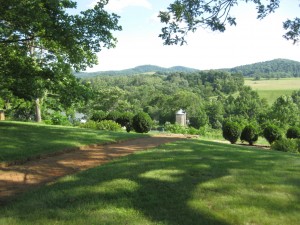 But, as if on a Hollywood cue, late in the afternoon the clouds parted, a gentle breeze picked up and an extraordinary evening began to unfold on the beautiful Cliff and Lucille Miller Mount Vernon Farm in Sperryville. The unique elements of the evening evolved much like an artist working at his canvas: an historic farm house dating to 1827; a world-class chef and his sommelier in the field kitchen; a concert size tent placed in a mountain meadow high above the village of Sperryville, and the Blue Ridge Mountains framing the entire scene. In a word, wow.
But, as if on a Hollywood cue, late in the afternoon the clouds parted, a gentle breeze picked up and an extraordinary evening began to unfold on the beautiful Cliff and Lucille Miller Mount Vernon Farm in Sperryville. The unique elements of the evening evolved much like an artist working at his canvas: an historic farm house dating to 1827; a world-class chef and his sommelier in the field kitchen; a concert size tent placed in a mountain meadow high above the village of Sperryville, and the Blue Ridge Mountains framing the entire scene. In a word, wow.
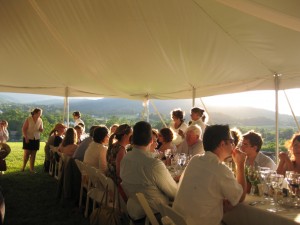 In this milieu, locally raised produce, lamb, and wines were served to a group of loyal supporters celebrating the county’s farmers. A hammer dulcimer band played in the background as a four-course dinner was served following the reception hour. As the sun faded over the mountains and night fell, everyone knew they had experienced a unique dining experience.
In this milieu, locally raised produce, lamb, and wines were served to a group of loyal supporters celebrating the county’s farmers. A hammer dulcimer band played in the background as a four-course dinner was served following the reception hour. As the sun faded over the mountains and night fell, everyone knew they had experienced a unique dining experience.
Jean and I represented Rappahannock Cellars at the event. I introduced our wines, the ’08 Seyval Blanc, poured during the reception, and our ’07 Cabernet Franc, paired with the main course of Roasted Loin of Lamb with Daube of Braised Shoulder, New Potatoes and Young Onions.
 Chef-Owner Cathal Armstrong and General Manger & Sommelier Todd Thrasher, from Restaurant Eve in Alexandria, created a repast not soon to be forgotten by the fortunate diners.
Chef-Owner Cathal Armstrong and General Manger & Sommelier Todd Thrasher, from Restaurant Eve in Alexandria, created a repast not soon to be forgotten by the fortunate diners.
The dinner was organized by Gourmet Rappahanannock Food & Wine Consortium, the Rappahannock Office of Tourism, and the Rappahannock Non-Profit Center at Mount Vernon Farm.
WINE LEGEND LAID FOOTINGS FOR VIRGINIA INDUSTRY
How would you describe a successful Virginia winery today?
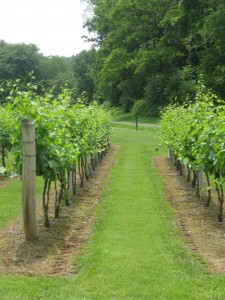 Produces 35,000 cases a year? Winner of two Governor’s Cups and myriad other medals and awards? Distributed in fourteen states? A client list of thirty-five restaurants and wine shops in Washington, DC? And oh, the proprietor and winemaker a graduate of Oxford?
Produces 35,000 cases a year? Winner of two Governor’s Cups and myriad other medals and awards? Distributed in fourteen states? A client list of thirty-five restaurants and wine shops in Washington, DC? And oh, the proprietor and winemaker a graduate of Oxford?
A succinct description. But, the business profile of our hypothetical winery is accurate except for the year. It was, in fact, the actual performance of the second commercial winery to open in the Old Dominion, Meredyth Vineyards, located in Middleburg. And it reached this level of success twenty-four years ago, in 1985.
The driving force behind this remarkable story was Archie M. Smith III, who died of complications of cancer on January 3 this year.
Archie M. Smith Jr., and his son Archie M. III, built the most successful winery in Virginia when the industry was in its embryonic stage. Archie, Jr. was a struggling cattle farmer in Middleburg when he conceived the idea of growing wine grapes instead of herding cows. Many of his fellow farmers scoffed at the idea of making wine in Virginia, much less turning it into a viable enterprise.
But, father and son had contrarian views. Perhaps it was the aggressive and courageous streak that ran through both men that turned a questionable venture into a booming business.
 Archie Jr. had been a World War II Marine fighter pilot. During the battle for Okinawa, his F4U Corsair was shot down and he had to ditch in the Pacific Ocean near Guadalcanal. Native “Coastal Watchers” rescued him. The following night, he was silently rowed to a waiting submarine and safely returned to his assigned aircraft carrier.
Archie Jr. had been a World War II Marine fighter pilot. During the battle for Okinawa, his F4U Corsair was shot down and he had to ditch in the Pacific Ocean near Guadalcanal. Native “Coastal Watchers” rescued him. The following night, he was silently rowed to a waiting submarine and safely returned to his assigned aircraft carrier.
His son, Archie III, graduated from the University of Virginia and attended Oxford University, receiving a degree in Philosophy and continuing on as an Associate Professor. Clearly, intelligence and determination played a significant role in the formation of both men and their success.
In 1977, two years after the winery was founded, Archie’s father convinced his son to return from England and take control of the fledging business. Archie’s experience as the coach and captain of Oxford’s competitive wine tasting team might have been the impetus that pulled him back across the Atlantic. But, whatever the motivator, it was an easy decision for Archie given his love of rural Virginia and creative instincts.
In the early years, the vineyard was planted almost exclusively in hybrid varieties such as Seyval Blanc, Villard Blanc, Rayon d’or, Aurora, Marechal Foch, Villard Noir and others. The planting of the Vitis Vinifera species—which produces ninety-nine percent of the world’s wines—had not yet begun in Virginia. When the breakthrough did occur, Meredyth Vineyards led the way producing some of the first Cabernet Sauvignon, Chardonnay and Merlot on a commercial basis.
The story of Meredyth—the Welsh spelling and the name of Archie’s maternal great grandmother—also embraced other family members. Archie’s sister, Susan, served as director of marketing, traveling tirelessly in the early years promoting the wines and is credited with its extensive distribution. And his younger brother, Robby, with a degree in architecture from Tulane, designed the winery’s permanent tasting room and wine cellar.
 Nonetheless, it was Archie III who brought his formidable powers of intellect and passion to bear on the wines and their acceptance in the market place. Beyond his commitment to the family business, he became actively involved in the state’s emerging wine industry. He was a member of the Virginia Wine Growers Advisory Board, serving as chairman for a period. He also was president of the Virginia Wineries Association. These were important organizations created when only a handful of wineries existed statewide. Today, we largely take for granted the early support groups that helped catapult Virginia to the top tier of wine producing states.
Nonetheless, it was Archie III who brought his formidable powers of intellect and passion to bear on the wines and their acceptance in the market place. Beyond his commitment to the family business, he became actively involved in the state’s emerging wine industry. He was a member of the Virginia Wine Growers Advisory Board, serving as chairman for a period. He also was president of the Virginia Wineries Association. These were important organizations created when only a handful of wineries existed statewide. Today, we largely take for granted the early support groups that helped catapult Virginia to the top tier of wine producing states.
One of the most far-reaching actions that Archie and his father undertook was their work in achieving passage of the Virginia Farm Winery Law in 1980. One important element of the law was the right granted to farm wineries to operate a retail outlet in the form of a tasting room. A winery’s success is closely tied to the “sip in order to sell” concept. Once a potential customer experienced a producer’s quality wines, sales began to accelerate. Both father and son recognized the importance of this freedom early on and worked tirelessly to make it a reality. The proof of their wisdom was reflected in the rapid expansion of the industry after the law was enacted.
As Meredyth’s success grew, it began attracting a host of wine lovers out to enjoy a day in the Virginia countryside. Visitors included philosophers, Oxford intellectuals, eclectic individuals of a wide variety and the general public. Archie surrounded himself with family, friends and, of course, the de rigueur friendly wine dogs. Beyond the tasting room, the winery hosted the first wine dinner in Virginia, followed by weddings, receptions and parties, all done in a low-key style compatible with its bucolic surroundings.
Reflecting his academic background, Archie began writing widely on the subject of wine. Advancing the interests of Virginia, he penned a regular column for Wine East magazine. Michael O’Donnell, owner of one of the state’s first circuit rider bottling firms, recalls Archie telling him during a bottling operation to, “Always challenge people to think.” It was admonition that was at the center of Archie’s worldview; all things improve with thoughtful consideration followed by action. Evidence of this belief was the awards and accolades that accumulated over the years.
 In 1986, he produced a custom bottling for the Washington Redskins to celebrate its 50th anniversary. He also enlisted noted sommeliers and wine critics to act as judges in the Governor’s Cup competition. Archie knew that to earn gravitas and national recognition, the knowledge of the judges rating the state’s wines had to be of the first order. In 1988, Governor Gerald Baliles honored the Smith family with a personal visit to the winery, recognizing the important role they were playing in the establishment of the industry in Virginia.
In 1986, he produced a custom bottling for the Washington Redskins to celebrate its 50th anniversary. He also enlisted noted sommeliers and wine critics to act as judges in the Governor’s Cup competition. Archie knew that to earn gravitas and national recognition, the knowledge of the judges rating the state’s wines had to be of the first order. In 1988, Governor Gerald Baliles honored the Smith family with a personal visit to the winery, recognizing the important role they were playing in the establishment of the industry in Virginia.
When Archie’s father decided to retire in 1993, the land was sold and leased back to the Smith family so that the vineyard and winery could continue. In 1998, Archie’s father passed away followed two years later with the death of his mother. Insufficient operating capital, coupled with Archie’s declining health, led to the painful decision to shutter the winery’s doors in 2000.
In retirement, Archie continued to write, focusing on philosophy articles, short stories and a book on philosophy and wine, which was not completed before his death.
 Today, in tasting rooms throughout the state, the daily soft clinking of wine glasses and the murmur of convivial conversation is the legacy that Archie M. Smith III has left to all Virginia wine lovers.
Today, in tasting rooms throughout the state, the daily soft clinking of wine glasses and the murmur of convivial conversation is the legacy that Archie M. Smith III has left to all Virginia wine lovers.
Published in the 2009 summer edition of the Virginia Wine Gazette.
On June 7, 2009—a quintessential soft summer evening in the Nation’s Capital— Rappahannock Cellars was honored to participate in the 27th annual Restaurant Association Metropolitan Washington awards gala, honoring the “best of the best” of the District’s restaurant industry.
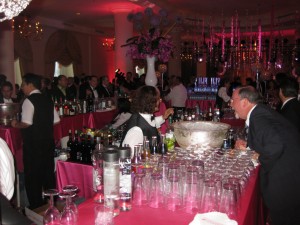 The event was held at the Omni Shoreman Hotel and featured an impressive reception with entertainment, followed by dinner and dancing.
The event was held at the Omni Shoreman Hotel and featured an impressive reception with entertainment, followed by dinner and dancing.
Rappahannock Cellars was among a select number of Virginia wineries to have its wine poured for the 1,200 guests. Our 2006 Meritage was served at the Virginia Wine Station during the dinner reception.
The RAMMY awards ceremony is held annually to recognize the best restaurateurs, chefs and food service industry employees in the Nation’s Capital. Because of the combined efforts of these professionals, Washington, DC is recognized as a major global gastronomic destination.
I was fortunate to attend the gala and meet many of the honored restaurant owners and managers. Among the media representatives in attendance was, John Kelly, Metro Columnist, for The Washington Post. John took a moment to evaluate our wine and was pleased with Virginia’s representation at the event.
Among the media representatives in attendance was, John Kelly, Metro Columnist, for The Washington Post. John took a moment to evaluate our wine and was pleased with Virginia’s representation at the event.
Rappahannock Cellars is recognized as one of the top wine producers in Virginia, as exemplified by its motto, Revolutionizing Virginia Wine.

